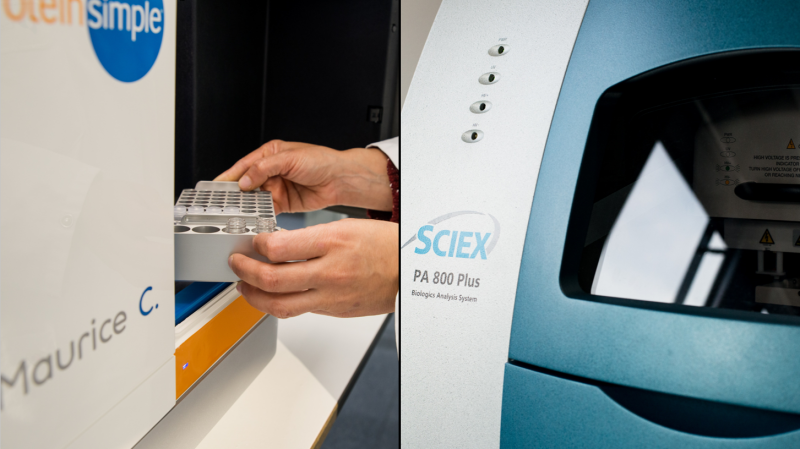Capillary isoelectric focusing (cIEF)
Capillary isoelectric focusing (cIEF) is a high-resolution analytical technique that allows the separation of protein/peptide mixtures, protein glycoforms and other charge variants, based on their isoelectric point (pI).

cIEF is based on the principle of capillary gel electrophoresis (cGE). In general, electrophoresis is a separation technique based on the migration of charged molecules in response to an electric field, toward the electrode of opposite charge. It is performed mainly in polyacrylamide gels. To separate molecules based on pI, a pH gradient inside the gel is established by ampholyte mixtures. The molecule of interest migrates along the electrical field until it reaches the pH corresponding to its pI, where it has a net charge of zero and stops migrating. The UV absorption over the whole capillary is measured throughout the separation, allowing real-time observation as well as a final quantification.
When compared to conventional isoelectric focusing (IEF) in slab gels, cIEF allows for higher resolution, faster sample analysis and has an approximately 10-fold lower limit of detection.
At Coriolis, cIEF is typically used for monitoring charge heterogeneity as well as oxidation and deamidation analysis of therapeutic (glyco)proteins, and in the context of product characterization or comparability studies.
Contact us
Contact us
Need more information? We are happy to answer your questions!
Phone: +49 89 41 77 60 – 111
Mail: joerg.mueller@coriolis-pharma.com


